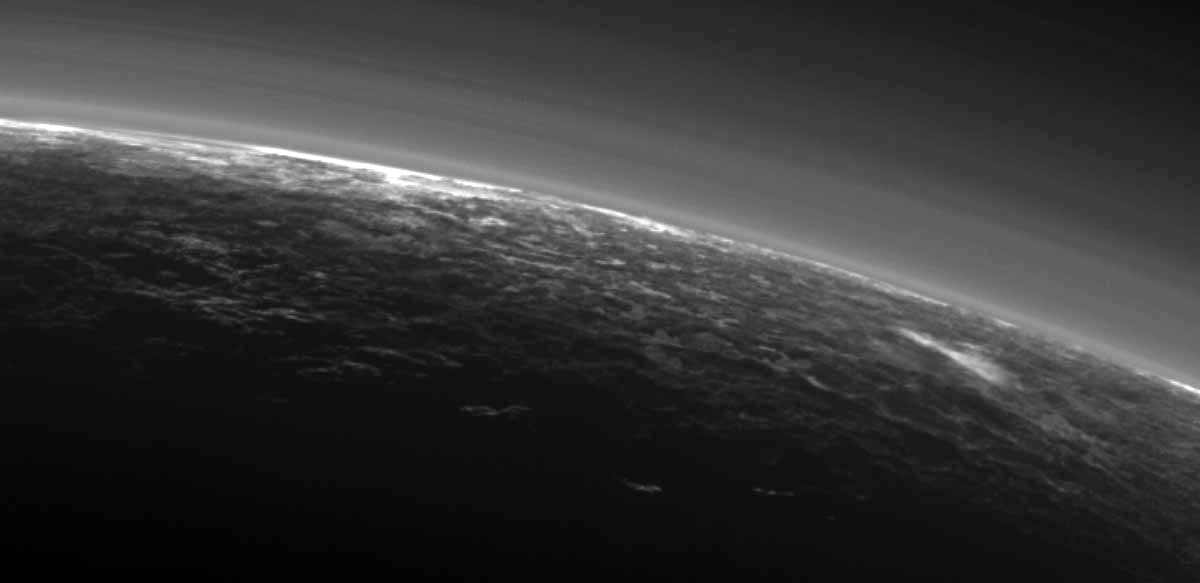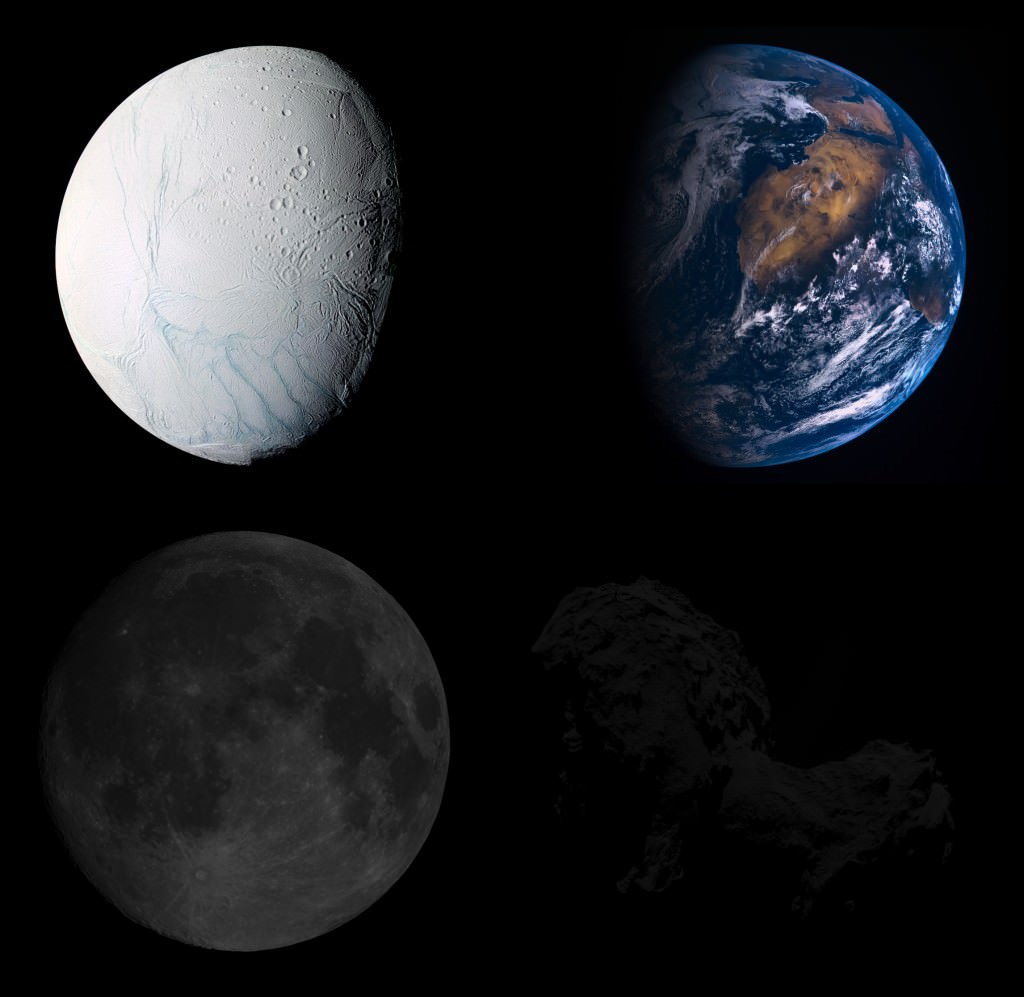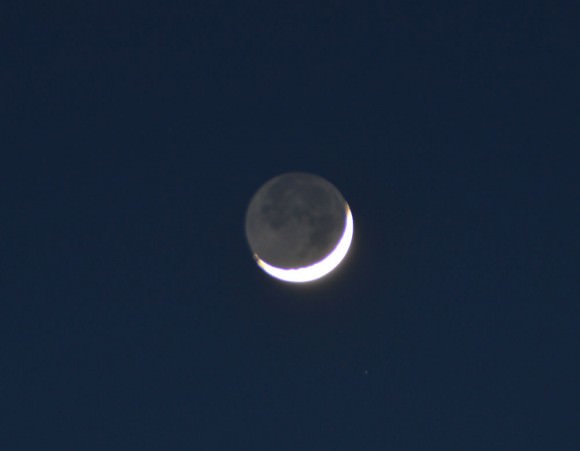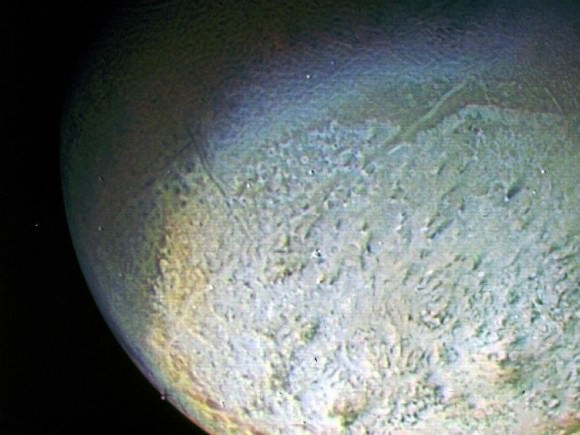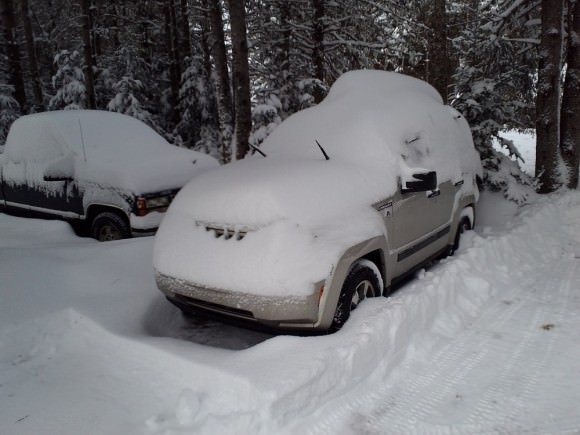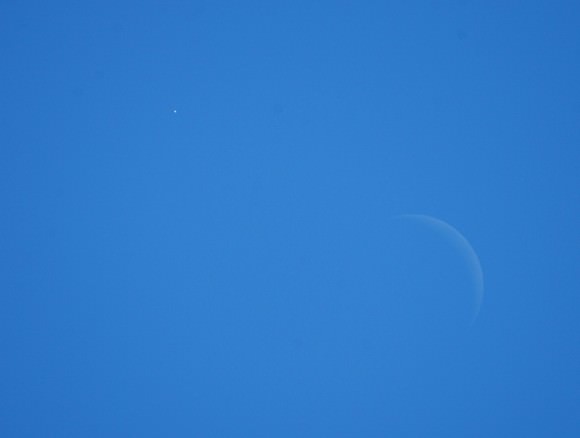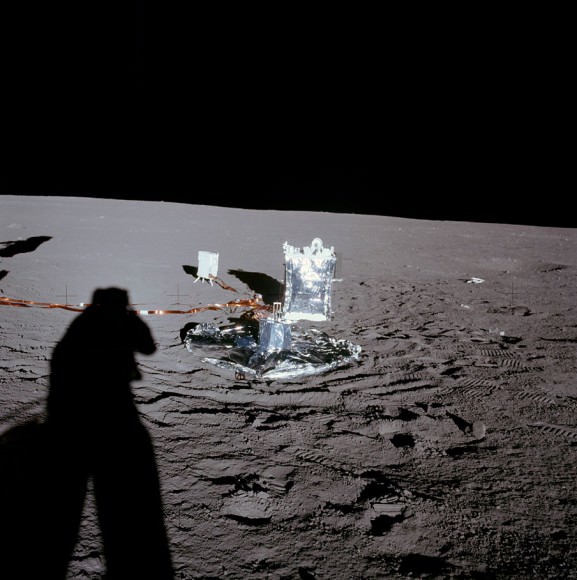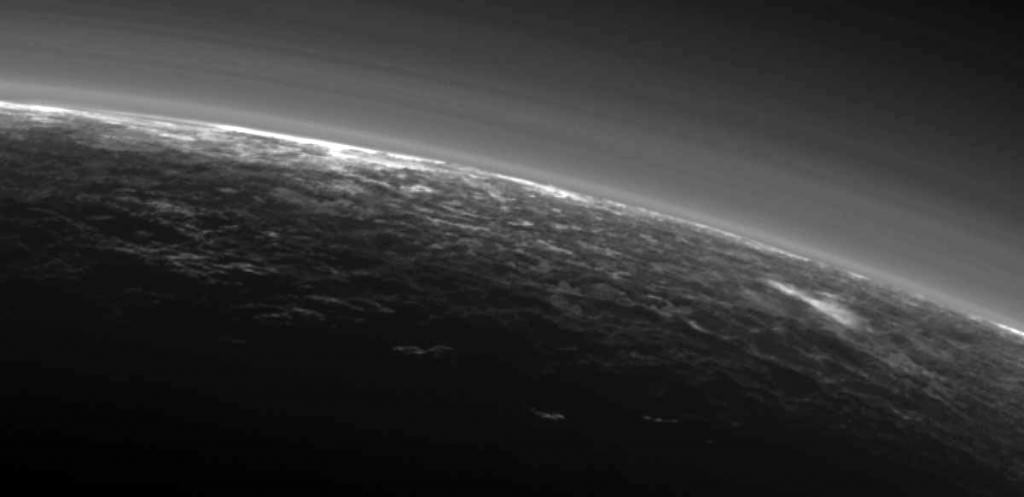
I think we were all blown away when the New Horizons spacecraft looked back at Pluto’s dark side and returned the first photos of a surprisingly complex, layered atmosphere. Colorless nitrogen along with a small percentage of methane make up Pluto’s air. Layers of haze are likely created when the two gases react in sunlight to form tiny, soot-like particles called tholins. These can ultimately grow large enough to settle toward the surface and coat and color Pluto’s icy exterior.
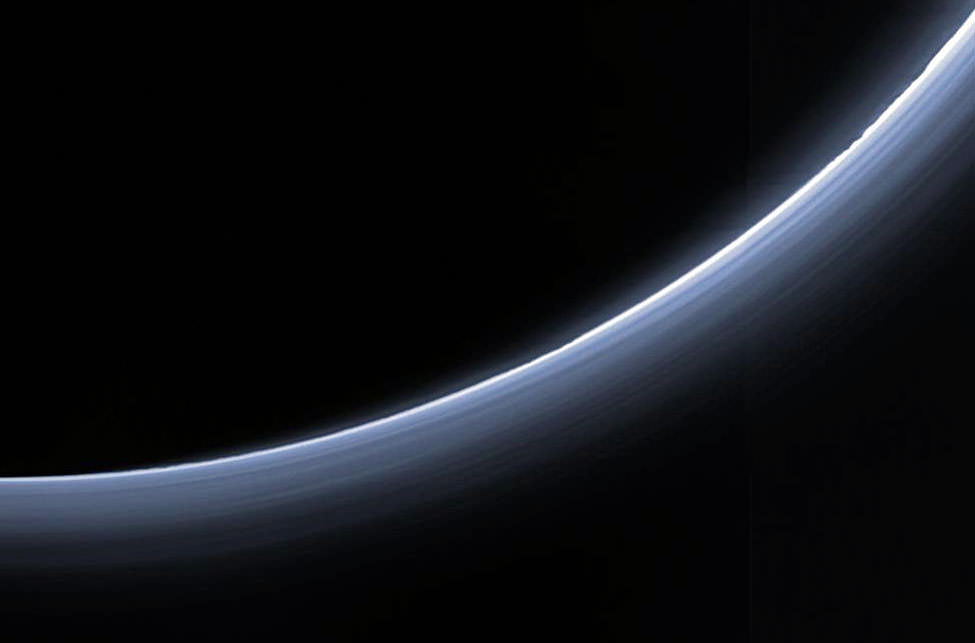
Now it seems Pluto’s atmosphere is capable of doing even more — making clouds! In an e-mail exchange with New Scientist, Lowell Observatory astronomer Will Grundy discusses the possibility that streaks and small condensations within the hazes might be individual clouds. Grundy also tracked a feature as it passed over different parts of the Plutonian landscape below, strongly suggesting a cloud. If confirmed, they’d be the first-ever clouds seen on the dwarf planet, and a sign this small 1,473-mile-wide (2,370 km) orb possesses an even more complex atmosphere than imagined.
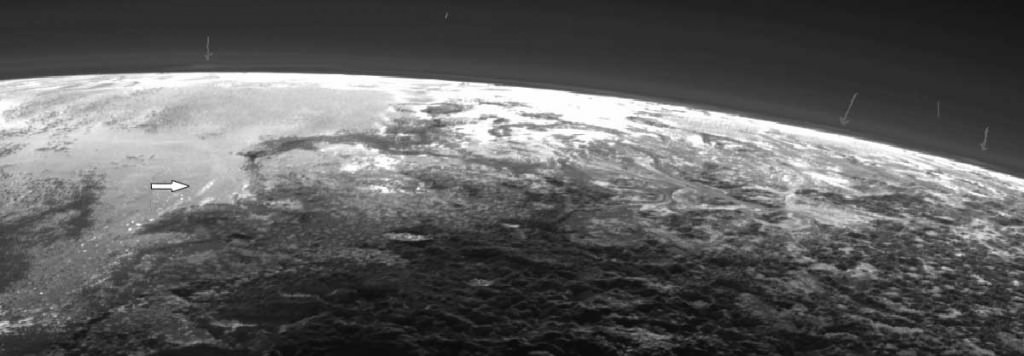
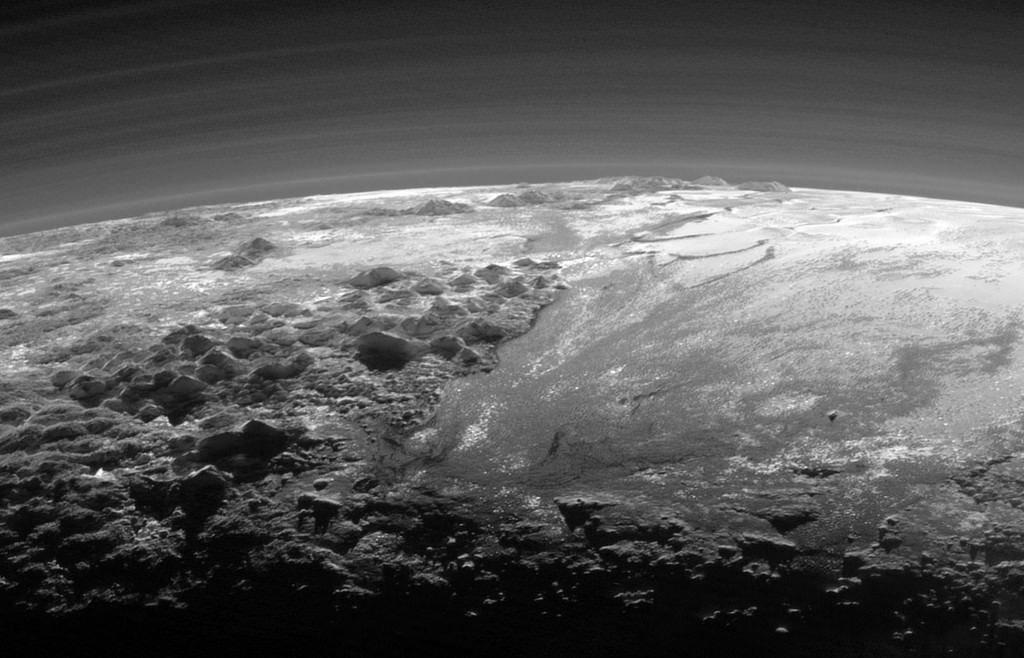
Given the onion-like layers of haze and potential clouds, perhaps we shouldn’t be surprise that it snows on Pluto. The New Horizons team announced the discovery this week of a chain of exotic snowcapped mountains stretching across the dark expanse of the informally named Cthulhu Regio. Cthulhu, pronounced kuh-THU-lu and named for a character in American horror writer H.P. Lovecraft’s books, stretches nearly halfway around Pluto’s equator, starting from the west of the vast nitrogen ice plain, Sputnik Planum. At 1,850 miles (3,000 km) long and 450 miles (750 km) wide, Cthulhu is a bit larger than the state of Alaska. But ever so much colder!
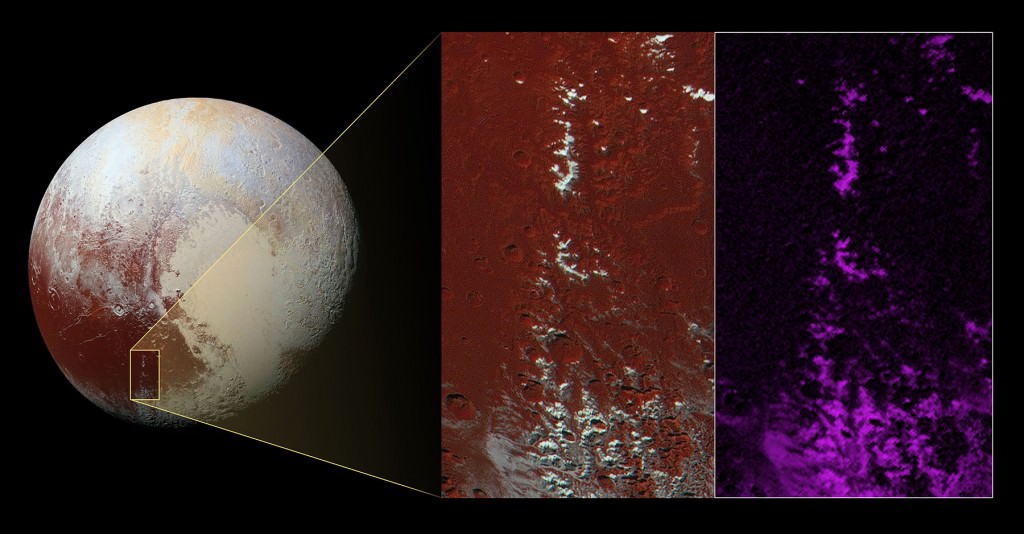
Cthulhu’s red color probably comes from a covering of dark tholins formed when methane interacts with sunlight. But new close-up images reveal that the region’s highest mountains appear coated with a much brighter material. Scientists think it’s methane, condensed as ice onto the peaks from Pluto’s atmosphere.
“That this material coats only the upper slopes of the peaks suggests methane ice may act like water in Earth’s atmosphere, condensing as frost at high altitude,” said John Stansberry, a New Horizons science team member.
Compositional data from the New Horizon’s Ralph/Multispectral Visible Imaging Camera (MVIC), shown in the right panel in the image above, shows that the location of the bright ice on the mountain peaks correlates almost exactly with the distribution of methane ice, shown in false color as purple.
New Horizons still has plenty of images stored on its hard drive, so we’re likely to see more clouds, frosty peaks and gosh-knows-what-else as the probe speeds ever deeper into space while returning daily postcards from its historic encounter.

